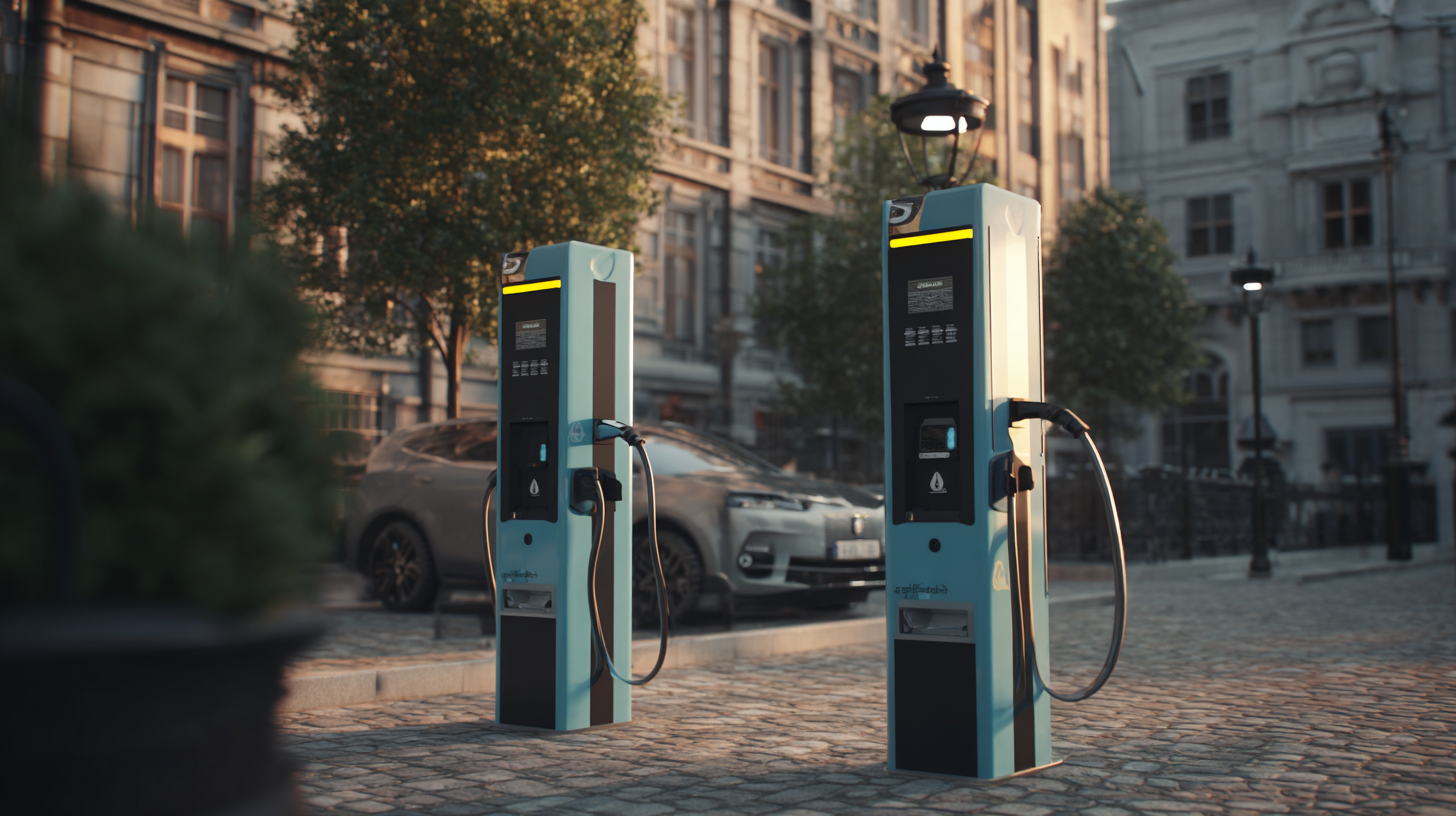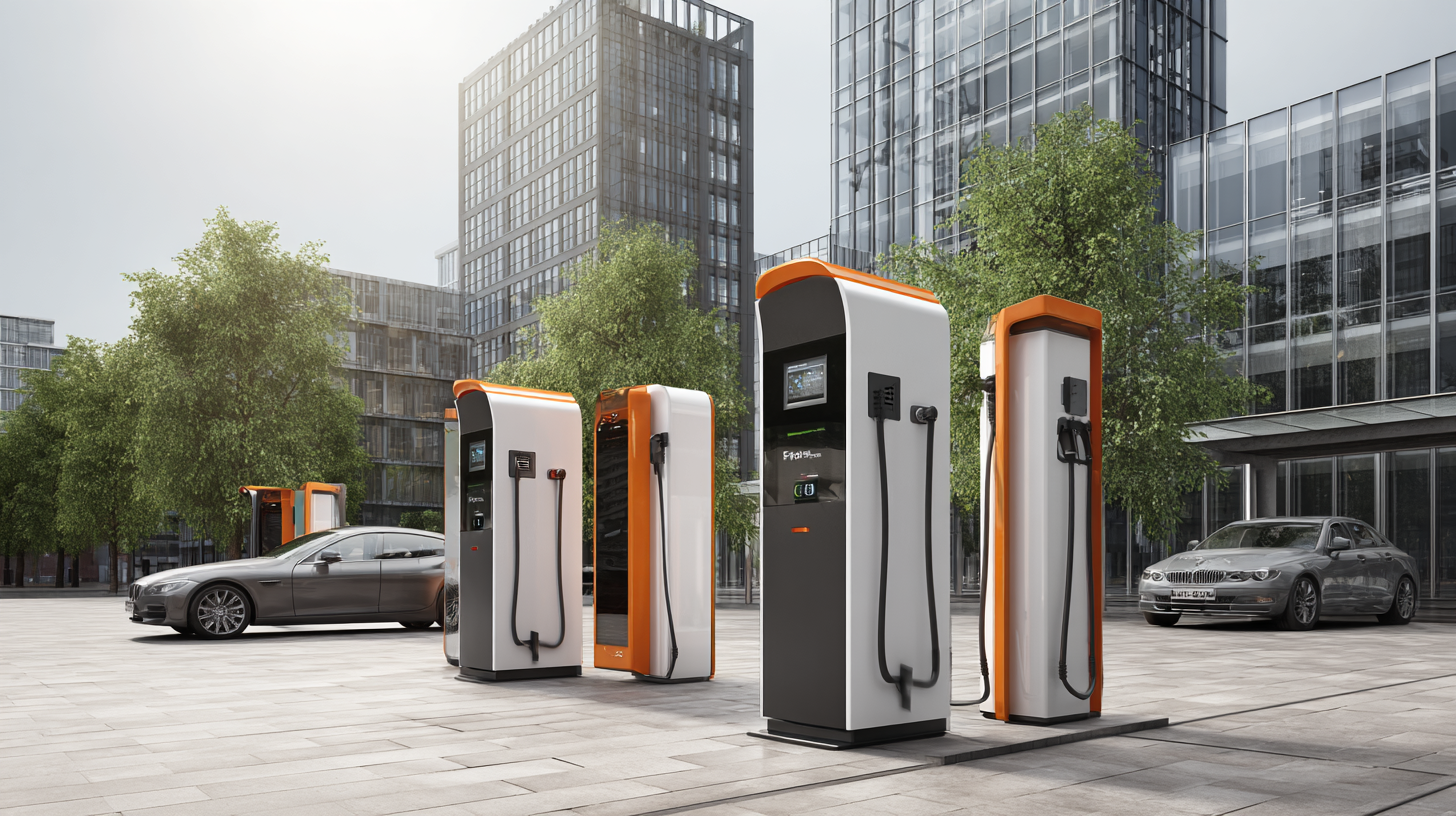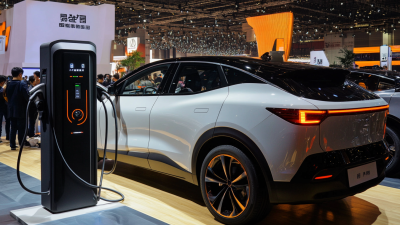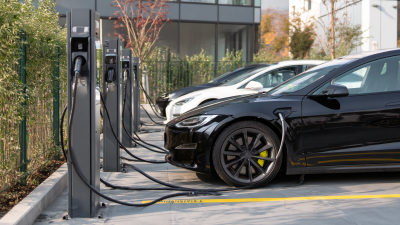The Future of Electric Charging Stations Transforming Urban Landscapes and Driving Sustainability
As cities evolve towards a more sustainable future, the role of Electric Charging Stations becomes increasingly pivotal in reshaping urban landscapes. These stations not only cater to the rising demand for electric vehicles but also symbolize a significant shift in how we perceive mobility and energy consumption within metropolitan areas. By integrating Electric Charging Stations into the fabric of urban design, we can enhance accessibility to clean energy, reduce carbon footprints, and foster a culture of sustainability. This transformation is not merely about convenience; it's about reimagining our cities as hubs of innovation where technology and environmental stewardship coexist harmoniously. In this context, understanding the dynamics of Electric Charging Stations provides valuable insights into the future of urban infrastructure and the collective effort towards an eco-friendly society.

The Role of Electric Charging Stations in Shaping Smart Cities
As cities evolve into smart ecosystems, electric charging stations play a pivotal role in shaping their infrastructure. According to a recent report from the International Energy Agency (IEA), the number of electric vehicles (EVs) on the road is projected to reach 145 million globally by 2030, creating an urgent demand for charging facilities. This transformation fosters urban development that integrates sustainable transportation solutions, thereby reducing carbon emissions and improving air quality.
Incorporating electric charging stations into urban landscapes not only supports the growing EV market but also enhances the overall city experience. A study by McKinsey & Company indicates that the presence of charging infrastructure can increase the adoption of electric vehicles by up to 60%. This alignment not only grows the local economy but also supports job creation in the green technology sector. Smart cities embracing this change can effectively promote energy-efficient practices, ensuring that charging stations are positioned strategically to optimize accessibility and encourage a broader transition to electric mobility.

Innovative Design Strategies for Integrating Charging Stations into Urban Landscapes
The integration of electric vehicle (EV) charging stations into urban landscapes is set to transform cities while advancing sustainability. As the EV charging station market is projected to increase from $10.1 billion in 2025 to a staggering $79.28 billion by 2033, innovative design strategies are becoming essential. These strategies focus on not just providing functional charging points, but seamlessly blending them into the urban design fabric, ensuring they enhance the aesthetic and environmental qualities of city spaces.
To achieve this, collaboration between automakers and charging network providers is crucial. By transforming from traditional manufacturers to ecosystem participants, companies can drive innovations that elevate user experience and competitiveness. Initiatives such as design forums that engage various stakeholders, including local designers and environmental advocates, can spark creativity in integrating charging solutions. For instance, the development of smart charging stations that incorporate sustainable materials and functionalities—such as real-time usage analytics and green energy sources—can set new benchmarks for the industry. As cities embrace this transformation, the focus will be on creating a cohesive network of charging stations that not only support electric mobility but also contribute to greener urban environments.
The Future of Electric Charging Stations in Urban Landscapes
This chart illustrates the projected number of electric vehicle (EV) charging stations in urban areas from 2023 to 2030, highlighting the increasing demand for sustainable transportation solutions.
Enhancing Sustainability Through Strategic Placement of Charging Infrastructure
The strategic placement of electric charging infrastructure is essential in enhancing urban sustainability. According to a report by the International Energy Agency (IEA), the global number of electric vehicles (EVs) is projected to exceed 145 million by 2030. This rapid growth requires an equally ambitious expansion of charging stations, ideally located within walking distance of homes, workplaces, and essential services. By embedding charging stations into urban planning, cities can reduce range anxiety for EV drivers, leading to increased adoption and further driving down greenhouse gas emissions.
Tip: Consider proposing mixed-use developments that incorporate charging stations. This can create convenient access for EV users while maximizing the utility and sustainability of urban spaces.
Cities like Amsterdam have already set benchmarks with their charging infrastructure, where more than 3,000 public charging points exist—representing one station for every ten EVs. These strategic placements not only facilitate EV use but also encourage local businesses, driving economic growth while maintaining an environmentally friendly focus.
Tip: Engage with community stakeholders to develop a charging network that meets the needs of all, from residents to local businesses, ensuring effectiveness and support for sustainability efforts.
User-Centric Solutions: Making Electric Charging Accessible and Convenient
As urban areas continue to evolve, the integration of electric charging stations is becoming essential for enhancing accessibility and convenience for electric vehicle (EV) users. Recent developments showcase a growing focus on user-centric solutions, transforming the landscape of urban mobility. The launch of innovative programs and partnerships aimed at expanding charging networks reflects a commitment to making EV charging more accessible. With the introduction of charging options that prioritize user experience, such as advanced features at charging stations and an extensive network of chargers, urban environments are becoming more accommodating for EV drivers.

Furthermore, the collaboration between various technology providers enhances the smart charging ecosystem, ensuring that drivers can easily locate and utilize charging stations. By incorporating user feedback into the design of charging infrastructures, cities are working to address the specific needs of their residents. The emphasis on convenience is not only driving the adoption of electric vehicles but is also a significant step towards achieving sustainability goals. As cities focus on these innovations, the future of urban landscapes will likely be characterized by seamless access to energy solutions that empower users and support environmentally friendly transportation options.
The Impact of Renewable Energy on the Future of Electric Charging Stations
As urban landscapes evolve to accommodate the growing demand for electric vehicles (EVs), the integration of renewable energy into electric charging stations becomes crucial. According to a report by the International Energy Agency (IEA), the number of electric cars worldwide surpassed 10 million in 2020, showcasing an unprecedented shift towards sustainable transportation. By harnessing solar, wind, and other renewable energy sources, charging stations can significantly reduce their carbon footprint and create a more energy-efficient urban environment.
Utilizing renewable energy not only allows charging stations to operate sustainably but also enhances energy independence. For example, a study by the U.S. Department of Energy indicates that on-site solar installations can decrease energy costs for EV chargers by up to 50%, making them more economically viable in the long term. Cities embracing this model are paving the way for a sustainable future, promoting green energy while simultaneously accommodating increasing EV usage.
Tips: When selecting a location for new charging stations, consider areas with ample sunlight or wind exposure to optimize renewable energy generation. Also, engage with local energy providers to explore partnerships that can facilitate the transition to renewable energy sources at charging sites. By prioritizing sustainability in planning, cities can effectively transform their urban landscapes and support the electrification of transportation.
| Charging Station Type | Average Charging Time (hours) | Installation Cost ($) | Estimated Daily Users | Renewable Energy Integration (%) |
|---|---|---|---|---|
| Level 1 Charger | 8-12 | 1000 | 5 | 10 |
| Level 2 Charger | 4-8 | 2000 | 15 | 30 |
| DC Fast Charger | 0.5-2 | 50000 | 50 | 50 |
| Wireless Charger | 2-4 | 30000 | 10 | 20 |
| Solar Powered Charger | Varies | 25000 | 8 | 100 |
Related Posts
-

Top 10 Car Charging Station Manufacturers in China at the 137th Canton Fair
-

Understanding the Importance of Car Charging Stations in Modern Transportation
-

Unlocking Efficiency: The Future of Global Electric Charger Installations
-

Exploring the Global Surge in Ev Charging Stations Cost at the 137th Canton Fair 2025
-

Exploring Innovative Alternatives to Best Car Charging Stations for Global Purchasers
-

Unlocking the Potential of Best Electric Charging Stations Through 7 Real World Applications
